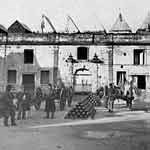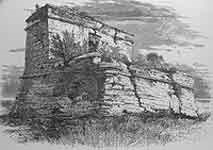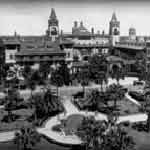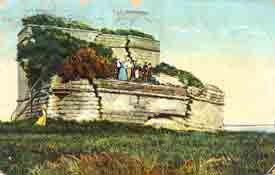
The Territorial Period (1821-1845)Only three Spanish soldiers were in residence at Fort Matanzas when the United States took possession in 1821. The interior was in ruins, and the gun platform's east wall and its foundation had cracked. The U.S. Army sent an inspector who reported that the tower was obsolete and had only historical value. Although owned by the War Department, Fort Matanzas was never occupied by the United States army. 
Samuel A. Cooley The Civil War YearsFlorida was granted statehood in 1845 as the 27th state. At the beginning of the Civil War, Florida was the third state to vote for Secession, which she did on January 10, 1861. Confederate troops immediately took Fort Marion (Castillo de San Marcos) from the lone Union sergeant caretaker who asked for a receipt and travel money to get home. Believing the war would soon be over and would never come this far south, the Confederates removed most of the cannon from Fort Marion and sent them to more strategic forts. 
This activity had little effect on the old tower, however, and soon the area was abandoned once more. With the passage of time, the tower began to deteriorate even further. It was a quaint ruin overgrown with vegetation in 1872 when artist Harry Fenn sketched the fort for the book Picturesque America.

The Flagler EraDuring the late 19th century, St. Augustine became the destination of America's rich and famous. In 1885, railroad tycoon and former Standard Oil partner Henry Morrison Flagler raised Florida's resorts to a new level with his 540-room Ponce de León Hotel in St. Augustine. The first of three Flagler hotels in the city, the Ponce de León (now the main building of Flagler College) combined exotic Spanish Renaissance and Moorish architectural features with innovative poured concrete construction. 
PreservationThese wealthy visitors came down the river on excursions to the Matanzas ruins, and they also visited Fort Marion in town, which, although still an active military fort until 1900, was also falling into disrepair. They believed these historic structures must be saved, and they spoke with their friends and congressmen. In 1916, Congress granted $1025 for the repair of these structures, the first time that the federal government had granted money for historical preservation. Read More . . .
|
Last updated: April 27, 2022
